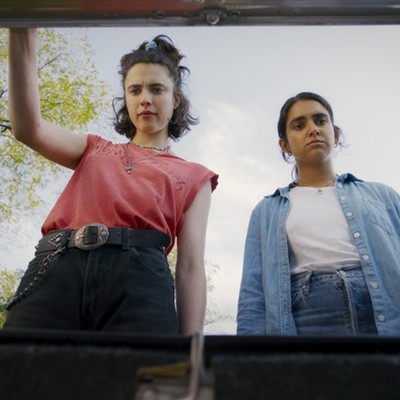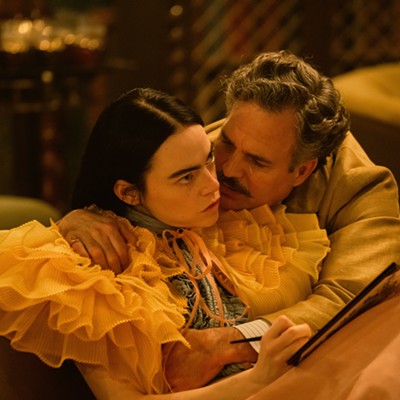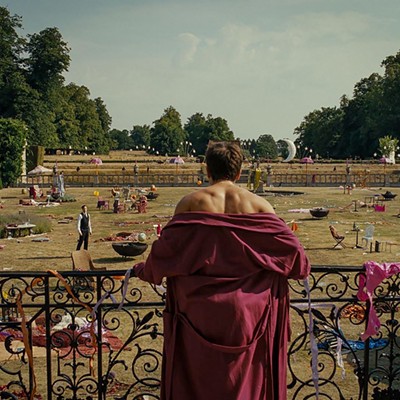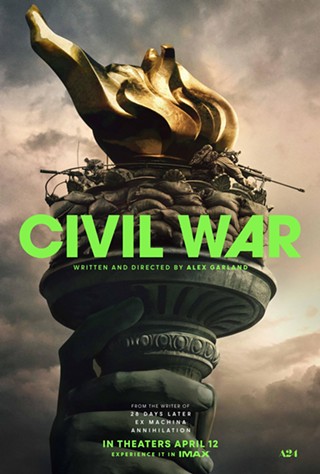I was among those fortunate enough to catch the monumental Jaws 3-D on the big screen, where Oscar-winner Louis Gossett Jr. and Dennis Quaid summoned various bug-eyed reaction shots to fake-looking mechanical sharks. I also caught 1991's Freddy's Dead: The Final Nightmare, where Freddy Krueger spent the last few minutes of what was supposed to be his final film slicing and cackling in the third dimension.
My conclusion after seeing those earlier films: 3-D movies suck. My conclusion after seeing writer-director Robert Rodriguez's third and alleged final installment of his popular Spy Kids series: 3-D films still suck, but this one is marginally better.
That doesn't mean I'm endorsing this film involving a 3-D video game, in which young child spy Juni Cortex (Daryl Sabara) enters a 3-D video game to rescue his former partner and sis Carmen (Alexa Vega). This is only to say that Robert Rodriguez almost succeeds in putting together a passable film rather than something whose only purpose is to make your head bob and weave away from optical illusions.
The game created by arch villain The Toymaker (Sylvester Stallone having some fun) aims to enslave the minds of all the world's children. Juni enters the video game world (in much the same manner as Jeff Bridges did in Disney's Tron), taking on a superhero persona and playing a series of game levels to rescue his imprisoned sister.
Not much happens during these games other than the requisite competition, which allows Game Over to skimp on storyline and dialogue in favor of various vehicles and monsters whooshing about on the screen. In fact, the movie often plays like one of those Playstation 2 games that you rented at the local video store and quit playing around the one-third mark because the visuals were so-so and the gameplay was terminally boring.
The overall 3-D effect should provide some thrills for kids while annoying everybody else. Wearing the glasses definitely causes a form of ocular strain, as if some mischievous little movie gremlin is trying to suck the eyes out of your head. Some of the sequences, such as a big robot battle in a coliseum and a pogo-stick fight, have a couple of "oooh!" moments, but overall, the effect produces nominal thrills.
Rodriguez parades a slew of his friends through the proceedings, such as George Clooney (who does a great Stallone impression), Salma Hayek, Bill Paxton and Steve Buscemi, and it's fun to see them. Stallone gets to show off his flair for comedy as the evil Toymaker, but Rodriguez fails to provide the 3-D character with much depth. Moments where Sly talks to three alter egos, all played by him, stand as the film's best.
As for top-billed Antonio Banderas, he spends all of 10 minutes in the movie, with his scenes containing little dialogue. Ricardo Montalban reprises his grandfather role, getting to leave his wheelchair in an amusing manner that allows him to become a video game giant. Sorely missed is the dynamic between Vega and Sabara, such a likeable duo in the first two films, reduced to only a few minutes of screen time in this chapter.
In the end, the experience taxes the patience. Rodriguez gives you a brief interlude before film's end to take the glasses off, and seeing those crisp colors as opposed to the grays and blurs of the 3-D world might have some wishing they didn't have to put the damn things back on for the finale.










